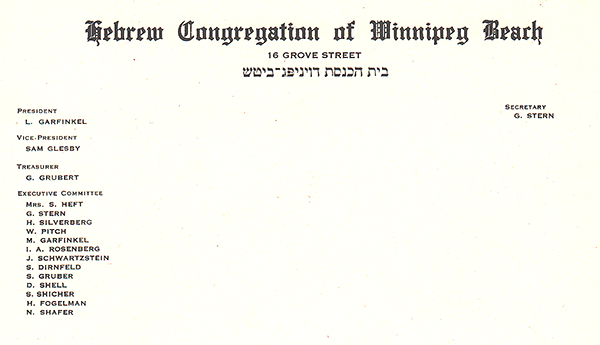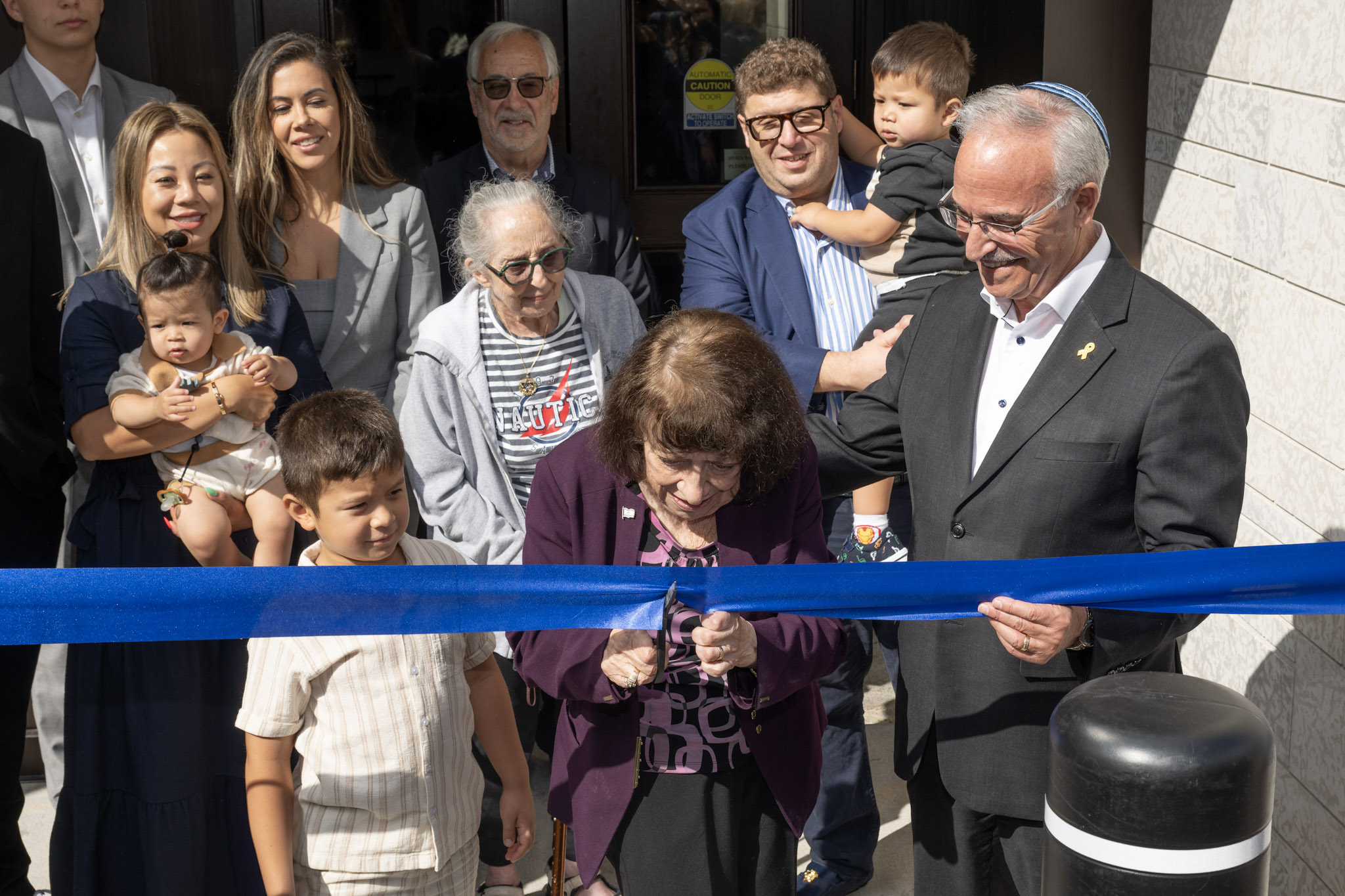Local News
Simkin Cenre hosts animated focus group on personal care homes hosted by MARCHE

By BERNIE BELLAN There are approximately 130 personal care homes in Manitoba with approximately 10,000 residents in those homes.
Of the 130 pch’s, 27 are in the not-for-profit category, most of which are faith-based.
One of those pch’s is the Simkin Centre.
The association of not-for-profit homes in Manitoba is known as “MARCHE” (Manitoba Association of Residential & Community Care Homes for the Elderly).
Recently MARCHE held a focus group at the Simkin Centre attended by staff, residents, relatives of residents, and others who were interested in hearing about the current situation insofar as most pch’s are concerned.
The discussion was facilitated by Julie Turenne-Maynard, executive director of MARCHE. Ms. Turenne-Maynard distributed points for discussion among the six tables at which participants sat. One person at each table was asked to take notes of the discussions that ensued. After approximately one hour of discussions at each table, the note takers were asked to give summaries of what had been said at each table.
According to Ms. Turenne-Maynard, the Simkin Centre focus group was the third and final one in a series of focus groups that MARCHE has conducted in Winnipeg.
Prior to our entering into the discussion groups Ms. Turenne-Maynard gave some introductory remarks pointing out the difficult situation faced by all pch’s in Manitoba, not just the not-for-profit ones.
She noted that there has been no increase in operational funding for pch’s for the past 15 years, even as inflation has made it increasingly difficult to deal with ever rising expenses.
“The majority of personal care homes in Manitoba were built in the 1950s and 60s,” Ms. Turenne-Maynard observed, yet “governments haven’t increased budgets for renovations to personal care homes in the past 25 years.”
The average age of residents in pch’s has risen dramatically. “In the 1960s and 70s many residents in personal care homes had parking spots,” Ms. Turenne-Maynard observed. Now a great many residents in pch’s are “level 3s and 4s,” she said – the highest level of care that can be provided.
“Baby boomers are coming up and we don’t have the room,” she added.
But, rather than turning the focus group into a litany of complaints, Ms. Turenne-Maynard said that the purpose was to be able to provide the provincial government with useful information that could be incorporated into policy decisions.
At that point the discussions at each table began.
Not having anyone myself who is a resident at a pch, I was interested to hear from others what their impressions of pch’s were and because everyone at my table was either a staff member at the Simkin Centre or a resident or spouse of a resident there, I was eager to hear their experiences. What was of particular interest to me was that even though there were two individuals at my table who work at the Simkin Centre sitting at my table, they were quite candid in discussing some of the frustrations they themselves have in working within the system.
The first point expressed by someone at our table was their frustration over the “panelling” process – the process whereby someone is admitted into a pch. It came as a surprise to me to learn that, under the current panelling system, if someone would like to be admitted as a resident into a pch, once a bed is available you do not have a choice where you can go. (No one at the table was quite sure when the system changed, but previously someone would be given a choice of three different pch’s.)
Not only is there now no choice as to which pch you can enter, if you are hospitalized and deemed fit for discharge into a pch, and you do not want to go the first pch that is available, you will be charged $200/day to remain in the hospital.
The situation, I was told though, is somewhat different for an individual still living at home. Efforts will be made to provide home care rather than have someone admitted into a pch, but the limitations of home care have been well publicized, with clients allowed to receive only a maximum of 2 1/2 hours of home care per day.
The discussion turned to personal experiences of home care residents. What did they think was lacking in their care, if anything?
The individual at our table who is a resident at Simkin Centre said they had “no complaints.”
A staff member at the table asked that resident if they thought there was enough “programming” at the Simkin Centre?
The resident answered that there was.
I asked the resident whether the food was good? The resident responded that they were quite happy with the food.
(I mentioned that I have heard from some residents at the Simkin Centre that they weren’t happy with the food. I also referred to a forum that had been held at the Asper Campus years ago during which many complaints were voiced about the food at the Simkin Centre. To be fair, it’s hard to make an overall assessment of food quality based on anecdotal reports, but I will continue to ask why the Simkin Centre has to serve kosher food to all residents when the majority of residents there are no longer Jewish? I realize this is a sacred cow among some members of our community, but the fact is that an increasing number of Jewish personal care homes in the US have gotten away from serving only kosher food.)
Another person at our table who actually has a close relative living at the Simkin Centre mentioned that person’s most commonly repeated complaint is that “people aren’t as johnny on the spot as she’d like” when it comes to responding to requests for assistance.
As well, apparently there is a problem at the Simkin Centre with “clothing sent to the laundry going missing.”
We were then asked to respond to this question: “What services would be most important to you?”
The spouse of the resident at our table said, “Not being stuck in the rooms.”
Someone else suggested that medical consultants coming to residents’ rooms rather than requiring residents to be taken to see a doctor would be very helpful. That same individual listed a variety of specialists who are urgently needed at the Simkin Centre, including gynecologists, dermatologists, dental hygienists, and psychiatrists,” as well as “estheticians.”
The need for better x-ray services was also mentioned.
Someone else noted that the Garden Café is only open from 11-1.
The next question which respondents were asked to consider was: “What style of personal care home would you like to live in?”
Someone brought up the idea of “small house” personal care homes, in which groups of 20 individuals live in a separate residence, where each resident has their own kitchen and their own shower.
But, as much as that style of living might seem to be especially appealing when one incorporates their own life experiences into thinking about where they’d want to live, one of the individuals at our table suggested that “many people often blossom when they come here” precisely because they’re living with a large number of other residents.
Still, the consensus among everyone at the table (with the exception of this writer, since I offered no opinion on the subject) was that, if they could ask for certain things in particular – which are not all available under current rules, they would be: 1) a private room (which is the case at the Simkin Centre); 2) their own fridge (not available); 3) their own shower (not available); and 4) their own coffeemaker. (I admit I was surprised to learn that coffeemakers are not allowed until it was explained that it was a safety issue).
The final question which respondents were asked to consider was: “What would you ask from the new NDP government?”
Answers included: “An increase in the hours per day allowed to each resident”; “more programming”’; “ask them to cover the increases in fixed costs”; “hours/worker have stayed the same while the needs of residents have increased.”
Ms. Turenne-Maynard asked the notetakers from each table to give summaries of what had been discussed. Some of the points that were expressed were:
- there is a need for more staff
- staff need to interact more with residents
- while it’s nice that the previous government has budgeted millions of dollars to build more pch’s, “don’t build in a vacuum”
- “regulate the off-label use of pharmaceuticals”
- units in pch’s should be smaller; instead of having 40 living in a unit, ideally it should be 12-15
- “people need a purpose”
- “a personal care home is a place to come and live, not a place to die”
Ms. Turenne-Maynard offered the following assessment of what to expect from the new government: “Because of the NDP sweep there’s going to be a lot of reconnecting” – with new ministers and some new deputy ministers, but many deputy ministers and policy analysts will be staying on,” which should give some continuity when it comes to planning.
At the same though, someone else observed that, as a result of so many failings in the private-for-profit personal care home sector, and the possibility that even more private pch’s may close, there might be even more pressure placed on the not-for-profit pch’s to fill the vacuum left by private pch’s closing.
It was also suggested that the government “avoid building pch’s using an outmoded funding model” that has long proved inadequate.
As one of the senior staff members at the Simkin Centre who was in attendance observed of government decision making: “Every pch operator submits their own 10-year plan – full of proposals – and you’re lucky if you get one thing done.”
Ms. Turenne-Maynard did say that MARCHE will take all the proposals that emerged from the three focus groups it has held and come up with a coherent set of ideas which it will take to the new government.
Local News
Thank you to the community from the Chesed Shel Emes

We’re delighted to share a major milestone in our Capital Campaign, “Building on our Tradition.” Launched in November 2018, this campaign aimed to replace our outdated facility with a modern space tailored to our unique needs. Our new building is designed with ritual at its core, featuring ample preparation space, Shomer space, and storage, creating a warm and welcoming environment for our community during times of need.
We’re grateful to the nearly 1,000 generous donors who contributed over $4 million towards our new facility. A $750,000 mortgage will be retired in November 2025, completing this monumental project in just seven years.
We’re also thrilled to announce that our Chesed Shel Emes Endowment Fund has grown tenfold, from $15,000 to $150,000, thanks to you, the Jewish Foundation of Manitoba’s FundMatch program, and Million Dollar Match initiative in 2024. Our fund helps ensure that everyone can have a dignified Jewish funeral regardless of financial need.
As we look to the future, our goal remains to ensure the Chevra Kadisha continues to serve our community for generations to come. Our focus now shifts to replenishing our savings account and growing our JFM Endowment fund.
We’re deeply grateful for your support over the past several years.
It’s our privilege to serve our community with care and compassion.
With sincere appreciation,
Campaign cabinet: Hillel Kravetsky, Gerry Pritchard, Stuart Pudavick,
Jack Solomon, and Rena Boroditsky
Murray S. Greenfield, President
Local News
Winnipeg Beach Synagogue about to celebrate 75th anniversary

By BERNIE BELLAN (July 13) In 1950 a group of cottage owners at Winnipeg Beach took it upon themselves to relocate a one-room schoolhouse that was in the Beausejour area to Winnipeg Beach where it became the beach synagogue at the corner of Hazel and Grove.
There it stayed until 1998 when it was moved to its current location at Camp Massad.
On August 2nd members of the synagogue will be holding a 75th anniversary celebration.

As part of the celebration anyone who is a descendant or relative of any of the original members of the first executive committee (as seen in the photo here) is invited to attend the synagogue that morning.
If you are a relative please contact Abe Borzykowski at wpgbeachshule@shaw.ca or aborzykowski@shaw.ca to let Abe know you might be attending or for more information about the 75th anniversary celebration.
We will soon be publishing a story about the history of the beach synagogue, which is something I’ve been writing about for over 25 years.
Local News
Vickar Family cuts ribbon on new Tova Vickar and Family Childcare Centre

By MYRON LOVE In the words of Larry Vickar, the Shaarey Zedek’s successful Dor V’ Dor Campaign “is not only a renewal of the synagogue but truly a renewal movement of Jewish life in our community.”An integral part of that renewal movement was the creation of a daycare centre within the expanded synagogue. On Monday, June 23, Larry and Tova Vickar cut the ribbon, thereby officially opening the Tova Vickar and Family Childcare Centre in the presence of 100 of their family members, friends and other supporters of the project.
The short program preceding the morning ribbon-cutting began with a continental breakfast followed by a welcome by both Fanny Levy, Shaarey Zedek’s Board President, and Executive Director Dr. Rena Secter Elbaze. In Elbaze’s remarks, she noted that Larry and Tova wanted their family (including son Stephen and family, who flew in from Florida) and friends at the event to celebrate the opening of the Tova Vickar and Family Childcare Centre, “not because of the accolades, but because, as Larry put it, he hopes that their investment in the congregation will inspire others to do the same.”
“When Larry and I spoke about what this gift meant to him and the message he wanted people to take away,” she continued, “I couldn’t help but connect it to the teachings of Reb Zalman Schachter-Shalomi whose book – Age-ing to Sage-ing – changes the whole way we look at the concept of ageing and basing it on our ancestral teachings.”
She explained that his concept of “Sage-ing” is based on three key ideas – Discover your meaning and purpose; accept our mortality and think about the legacy you want to leave.
“Larry spoke about these exact concepts when we met,” she said.
Elbaze also noted the presence of Shaarey Zedek’s newly-arrived senior Rabbi Carnie Rose, former Rabbi Alan Green, and area MLAs Mike Moroz and Carla Compton.
Larry Vickar expressed his great appreciation for all those in attendance. “Tova and I are deeply moved to stand here with you today for this important milestone in our community”, he said. “We are grateful to be surrounded by all of you, the people we care about, our family and friends… you who have touched our lives and played some part in our journey.”
